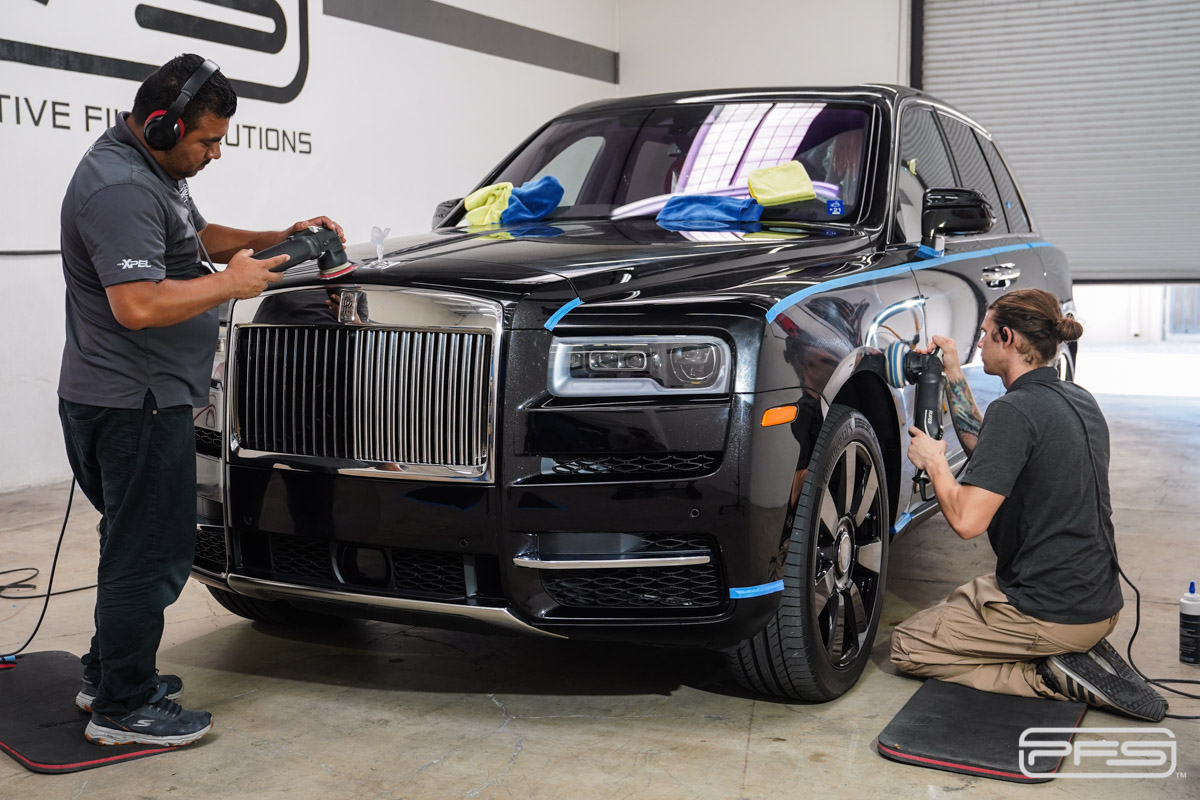The process of paint correction is one where we analyze the state of a finish and determine the best course of action to bring it to the best possible level of enhanced appearance. This applies to older vehicles or new ones. We determine the thickness and condition of the paint based on its age and by careful measurement. With this information we can decide how to safely correct it. The needs of each vehicle are different, but the importance of the process is the same.
An older exotic vehicle that has been around longer than the popularity of modern self-healing paint protection film might need small scratches or rock chips fixed. These vehicles require an amount of care and expertise that not very many shops possess. This is of special importance if the car has original paint that must be preserved. There are many factors involved in analyzing the paint and planning the work. These include the age of the paint, how many times it has been corrected and current thickness of the paint or clear coat.
Newer vehicles would have slightly different needs. For example, more often than not, new vehicles arrive from the dealer with less than perfect paint. This is usually due to transport as many luxury cars are covered for the trip to the dealer. This sort of protection saves the car from irrecoverable paint damage, but in turn often adds very light scratches, hazing and swirl marks. Additionally, this can be exacerbated by less than ideal washing techniques at the dealership while the vehicle is waiting to be sold. Furthermore, transport often exposes vehicles to contaminants like rail dust and heat that can further intensify the contamination of paint.
Any vehicle, new or old, usually needs some level of paint correction before receiving any protective service. In fact, even if a vehicle is simply getting a coat of wax to wait for the next weekend or car show, the paint could use correction to ensure the best possible appearance. If the car Is getting a ceramic coating it is imperative the paint be corrected to the be as close to perfect as possible. The reason for this is you don’t want to seal in imperfections. While you might not need paint correction for a color change wrap, you might want to make the paint as perfect as possible before sealing with a ceramic coating, and to a lesser extent, PPF. That all said, your car would highly benefit from paint correction after removing a wrap or even after removing PPF. A car that was protected with paint protection film for years will look like new and much better off than one that hasn’t been protected, but you will want to correct any light scratches or swirls that may have been added during the removal process.
At Protective Film Solutions we have years of experience in paint correction and know exactly what your vehicle needs. Whether it is minimal polishing with a very light compound, or more intensive compounding work, we know exactly what needs to be done and how to do it. We even have a very successful track record in one of the most difficult aspects of paint correction which is the reduction of the visibility of paint chips. We believe paint correction is one of the most important aspects of luxury car care and do not take it lightly. In fact, we find it to be so crucial we put as much effort, knowledge and resources into it as any of our top-level services like paint protection film. This is because we know that a properly prepped vehicle represents winning half the battle before any other service is performed.

Proudly using the world's best compounds and polishing pads
At Protective Film Solutions we use only the best compounds, polishing pads and random orbital polishing machines. We have control over each of the compounds down to the actual design process. Because of this, we are able to have a complete line of various formulas which we fully understand and trust. This experience in compounds is combined with impeccable pad-matching to achieve the ideal amount of polishing precision for the application at hand. We also believe in dedicating the extra time to achieve that above-and-beyond level of deep gloss that can only be acquired with very fine final polishing using the correct combination of compound, pad, speed and finesse. We call this final stage “gemming” the paint, as the gloss at this level is nothing short of a gem.




